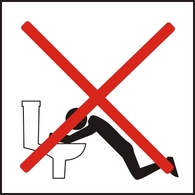
Key Initial point
- Postoperative vomiting occurs in about 30% of patients, with nausea in 50%.
- As well as unpleasant it can prolong the stay of day-case patients, with cost implications.
Identifying Risk Factors
- Age under 50 (Odds ratio (OR) with 95% confidence intervals (CI) = 1.79 (1.39 - 2.30))
- Age per decade (OR 0.88, CI 0.84 - 0.92)
- Female gender (OR 2.57, CI 2.32 - 2.84)
- History of PONV (OR 2.09, CI 1.90 - 2.29)
- Non smoker (OR 1.82, CI 1.68 - 1.98)
- History of motion sickness (1.77, CI 1.55 - 2.04)
- Cholecystectomy (OR 1.90, CI 1.36 - 2.68)
- Gynaecological surgery (OR 1.24, CI 1.02 - 1.52)
- Laparoscopic surgery (OR 1.37, CI 1.07 - 1.77)
- Use of volatile anaesthetic agent (OR 1.82, CI 1.56 - 2.13)
- Duration of anaesthetic (OR 1.46 h-1, CI 1.30 - 1.63)
- Postoperative opioid use (OR 1.47, CI 1.31 - 1.65) - irrespective of type of drug in dose dependent manner
- Nitrous oxide use (OR 1.45, CI 1.06 - 1.98)
Risk Scoring
The two common scoring systems that the authors highlight are the Apfel score and the Koivuranta score. These attribute points to some of the above mentioned risk factors in order to stratify patients as low, medium or high risk of PONV, and advise on anti-emetic therapy as appropriate. Whilst these are recognised as being useful, their sensitivity and specificity is quoted as being around 65-70%, thus requiring some interpretation of scores alongside other factors that aren’t covered.
As well as routine adult PONV risk assessment, the authors briefly look at the problems of PONV in children and post-discharge nausea and vomiting in day-case patients, providing similar scoring systems with which to approach these patients. Indeed I think the post-discharge risk assessment is particularly relevant given the ever increasing amount of day-case surgery we are undertaking and the lack of easy relief of PONV when these patients have left hospital.
Final Thoughts
That just about wraps up a quick look at the first part of the guidelines, but I hope to have a quick review of some of the other interesting component in future posts. As always thanks for reading and please post any comments, links or ideas on the topic.
Tom
Consensus Guidelines for the Management of PONV - The Anesthesia & Analgesia article
Medscape PONV - The Medscape review of the subject
Anaesthesia UK - Review of PONV
AAFP - A review of the risk scoring with the Apfel and Koivuranta scores
Image courtesy of David Castillo Dominici/Freedigitalphotos.net
 RSS Feed
RSS Feed
